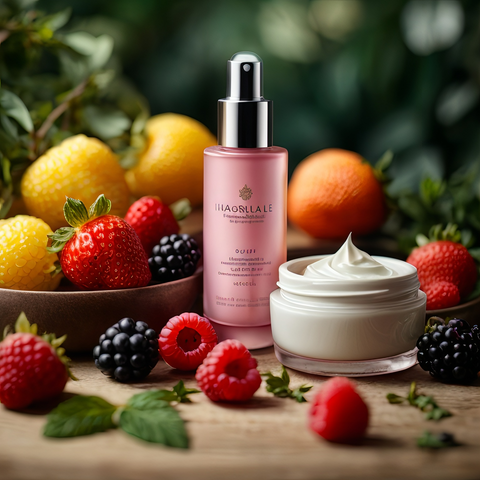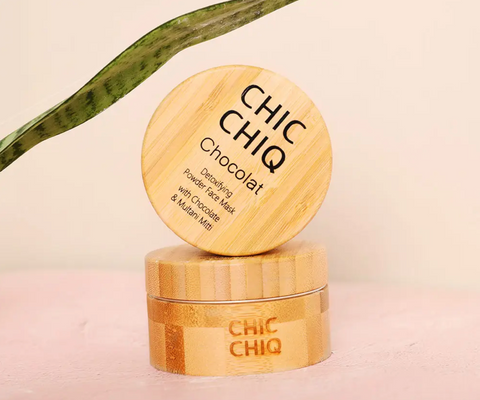Clean, it's simple - what are clean cosmetics and what do you have to be careful of?
One of the strongest trends we see in cosmetic products In recent years, a trend that intensified even more in 2020 with the appearance of the corona disease, it returned to simple and clean.
Cosmetics are associated with various phrases such as "organic", "green", "vegan", "natural"... Cosmetics is a large group of definitions, but what does it actually mean? And why is it good for us?
What is clean beauty?
A care product defined as "clean" must meet 2 basic requirements:
- Non-toxic ingredients and safe to use - clean cosmetic products are those that can be used without any fear of harm to health. The ingredients must be non-toxic and safe to use.
- Legible and clear labels with complete transparency - when all the ingredients are indicated in detail on the cosmetics brand label, we are on the right track. But not all cosmetic companies practice complete and important transparency, and there are reasons for this in most cases.
A common example of lack of transparency in the industry is when "fragrance extracts" are mentioned. Fragrance is not an "ingredient", and we can certainly encounter harmful ingredients "hiding" under this term.
Another example of consumer deception is confusing branding. Companies may use keywords such as "natural" or "ecological" in order to gain the buyer's attention. This is called "green washing".
Clean cosmetics do not contain mysterious ingredients but those that you know and know how to identify easily, and clearly does not pretend to be what it is not. No confusing terms and long words.
net ,it's simple!
Did you expect a longer list of requirements?
Maybe you were expecting words like "natural" or "organic"?
But clean cosmetics are not perfect.
The phrase simply means that we can see man-made and non-natural ingredients, but that's fine, as long as the ingredients are safe to use and non-toxic. It also means that not all ingredients have to be "100% natural" or "organic", no preservatives, etc.
Clean cosmetics are cosmetics without toxic substances.
Our responsibility as consumers
Instead of focusing on buzzwords like "natural" or "organic", clean cosmetics focus on eliminating toxic ingredients from our daily skincare routine as much as possible.
Clean cosmetics is also our awareness as consumers. We, as consumers, need to know the common toxins in our care and beauty products and it is our responsibility to pay attention to what the products we buy contain.
There are several basic misconceptions about clean cosmetics that need to be clarified:
Does clean cosmetics have to be natural?
The answer to the question is no. Clean cosmetics do not necessarily have to be all natural.
For a long time, the stars of clean cosmetics were products that included only natural ingredients. "Preservative-free" is just another buzzword around clean cosmetics.
We live in the 21st century and the science of beauty is developing at an incredible pace. Today you can find a wide range of synthetic materials that are safe to use, man-made, and even preservatives that are safe to use. In fact, all cosmetic products include certain types of preservatives in order to protect the product.
As long as non-toxic ingredients that have been proven safe to use are used, they can be included under the definition of clean cosmetics.

Does clean cosmetics have to be organic?
Similar to natural cosmetics, the use of organic cosmetics can also be confusing. As with organic food, there are many benefits to using organic ingredients in the cosmetics industry, but non-organic ingredients can be just as safe to use.
Bottom line: No, clean cosmetics do not have to be organic.
Does clean cosmetics have to be 'green'?
If the definition of clean cosmetics is not entirely clear, then the definition of "green cosmetics" is even more ambiguous. When talking about "green cosmetics", a number of associations immediately come to mind:
- The product is plant-based.
- vegan
- Not tested on animals
- Environmentally friendly
- Recycled packaging
Definitely impressive, but even though these criteria sound great, a cosmetic product can meet all of these criteria together and still contain toxic ingredients!
And the opposite is also true, a cosmetic product can be completely safe to use, but include components of animal origin (honey, wax, silk, etc.). In this case, the product will still be considered clean because it does not contain toxins, but will not be considered "green".
So clean cosmetics don't have to be green.
So,natural,organic,green does not necessarily mean that the product is clean. So how do we know if a product is good for us?
Well, we will always question labels that use words like "natural" and "green" because the truth is in the ingredient list. Of course, this does not mean that products containing the word "natural" and "green" are necessarily toxic or suspected as such.
What this article has come to do is to teach what is worth looking at and what information we need to decide whether a product is clean or not. When we come to examine the label, we will learn what to avoid.

The opposite of clean cosmetics: toxic cosmetics
There is a whole world of clean cosmetics. It's always possible to find clean alternatives to the products we're looking for, but it takes some effort, especially if you're new to the world of non-toxic cosmetics.
To begin, we will examine a number of red flags that will alert us that this is a toxic product.
What is 'Greenwashing'?
As mentioned, the second criterion of clean cosmetics is fully transparent labels. To understand the "green laundry" let's imagine for a moment how when we come to search Recommended serum In order not to poison our facial skin, we come across a white, clean and pure bottle with the following inscription: "Natural ingredients only". Without thinking too much and without checking the ingredients at all, since it clearly says "natural", we will pick up the bottle thinking that we have found exactly what we were looking for.
However, if we still read and scroll through the list of ingredients, we will find that the "clean" serum contains allergens, hormone disruptors, and carcinogens!
This is the "green laundry" that certain brands use to qualify the product.
A green laundry describes a situation in which the brand uses advertising and marketing to convey a false message that the product is good for us and the environment. Many brands try to appeal to the conscious consumer that health and the environment are important to him. Instead of investing in the development of truly safe products, many brands use the green laundry to gain our trust, without standing behind the promises.
How can a "green laundry" be legal at all?
Many cosmetic companies can use misleading labels, because a large part of the labels is not yet defined by law. The law does not always catch up with the "creativity" of the cosmetics companies, so that in fact, brands can define for themselves a standard of what is considered natural, organic, etc.
Which labels should I be careful of?
- organic
- natural
- Without harmful substances
- Hypoallergenic
- Not tested on animals
List of the top ten hazardous substances
To know the level of safety/toxicity of each and every component we will probably have to change professions. You can't always trust what you read on the label and you don't always know what to look for. So how do we avoid toxic ingredients in our daily skincare routine?
It is recommended to start with the list of the ten "top suspects" that must be avoided at all costs:
- Parabens
- Essence of scent
- Chemical radiation filters
- Dietnolumine
- Triclosan
- Nanoparticles - Microscopic plastic components
- Foaming agents and SLS
- Formaldehyde and formalin
- Polyethylene
- Dioxane
Tips - How to transition to clean beauty
Switching to clean products is easier than we think.
It doesn't have to happen overnight and you may make some mistakes along the way. Don't let it stop you from reaching your goal.
Make 2021 the year you switch to clean products with the help of the useful tips here:
- start with Face products and/or hair products - In our daily routine we use many products. From shampoo to washing powder. In order not to panic, start with face and hair products. You wouldn't want toxins seeping through your face and scalp. Replace these products as quickly as possible, then move on for body products .
- Find specific clean brands you like and stick with them.
At first, try one or two clean brand products. It is likely that if you liked the product you tried, that brand will have other products that are considered clean, so you can expand the range of products from that brand.








